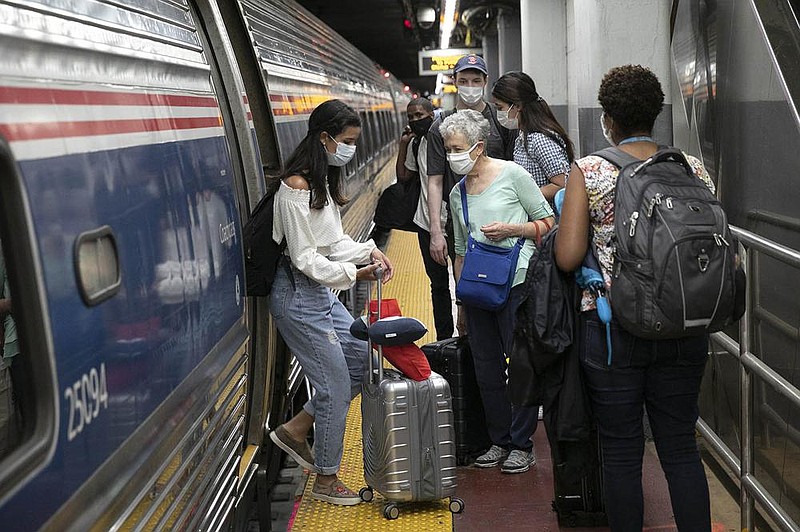WASHINGTON -- For Amtrak, the coronavirus pandemic has not only slashed ridership and any chances of breaking even but also forced its leaders to face an existential choice: act like a for-profit airline or a government-subsidized entity.
Since March, ridership on the national rail agency has fallen by 95% and projected revenue for 2021 has declined by 50%. In response, Congress has bailed out the rail network with $1 billion in emergency funds.
But Amtrak's leadership says it needs more money. Otherwise, it will have to cut costs by decreasing its workforce by 20% and curtailing service on long-distance routes that serve areas where Amtrak is often the only mode of public transportation. The agency receives federal funds but is independently run.
"Operating trains with very few passengers on them at all, during a time of constraint -- capital constraint, cash constraint and uncertainty around funding -- doesn't make a lot of sense," William Flynn, Amtrak's chief executive, said in an interview.
Rail advocates have pushed back, noting that as of July ridership on long-distance routes across the country is faring better than it is on those that were more popular before the virus hit -- including shorter routes like those in the Northeast Corridor.
[CORONAVIRUS: Click here for our complete coverage » arkansasonline.com/coronavirus]
Long-distance ridership is down 62% compared with the same period last year, while ridership on those relatively shorter routes through more urban areas is down more than 80%, according to an analysis by industry experts.
Advocates also argue that if Amtrak drastically cuts service to long-distance routes, it will become a less reliable mode of transportation and cause the rail network to lose passengers permanently. Rail experts are urging agency leaders to focus less on profitability and more on the network's mission.
"Not unlike the Postal Service, Amtrak is a service," said Jim Mathews, the president and chief executive of the Rail Passengers Association, an advocacy group. "The objective is not profit; the objective is to serve all the communities."
Amtrak leaders have pushed back on the notion that they plan to permanently cut service on long-distance routes in the name of profitability. They say reductions would be temporary and only in response to drastic drops in ridership.
"There isn't a focus on profitability. There's a focus on proper stewardship of resources," said Anthony Coscia, the chairman of Amtrak's board of directors. "There's no realistic way that we can lose 85% of our passengers and just continue doing everything the same way we were doing it."
Since Congress created Amtrak in 1970, the idea of profitability has loomed large among lawmakers who have gone back and forth with the question in legislation.
In 2018, Anderson decided to close an Amtrak reservation call center in California and told 500 employees they could keep their jobs if they relocated to Philadelphia in 60 days. Around 100 took the offer, according to union officials.
The same year, Anderson tried to significantly cut long-distance service along a 2,200-mile route that stretches from Chicago to Los Angeles and replace the portion from Kansas to New Mexico with bus service. Amtrak abandoned its plans after receiving fierce blowback from members of Congress.
Flynn has yet to testify before Congress about his vision for the rail agency, but he is prepared to cut Amtrak's operating costs by $500 million in its 2021 fiscal year, which starts in October, if Congress does not provide additional emergency funding.
His plans were met with intense skepticism from lawmakers on Capitol Hill, with 16 senators writing letters to the agency sounding the alarm at Flynn's proposed cuts to the workforce and long-distance service.
"These cuts would not only dramatically reduce the utility of the nation's passenger rail network, but would also ignore congressional intent to expedite economic recovery following the pandemic," a bipartisan coalition of seven senators, led by Steve Daines, R-Mont., said in one letter.
But the tension between rail advocates and the agency's leaders around the central issue of Amtrak's desire for profitability is likely to remain.
Amtrak's chief operating officer, Stephen Gardner, notes that long-distance service accounts for only 4.5 million riders out of the network's 33 million total, and cannot be the prime focus for the agency.
"It's a small part of our business," he said. "We need to be where the people are."
